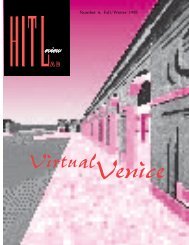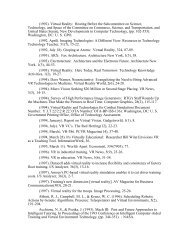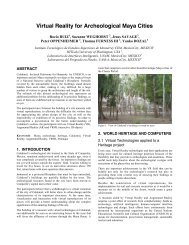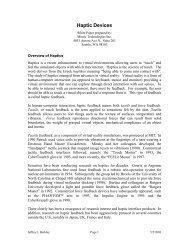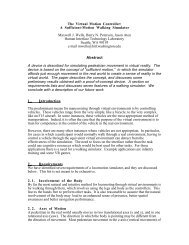A Calculus of Number Based on Spatial Forms - University of ...
A Calculus of Number Based on Spatial Forms - University of ...
A Calculus of Number Based on Spatial Forms - University of ...
Create successful ePaper yourself
Turn your PDF publications into a flip-book with our unique Google optimized e-Paper software.
12<br />
Table 2.2: Deniti<strong>on</strong> <str<strong>on</strong>g>of</str<strong>on</strong>g> Kauman <str<strong>on</strong>g>Number</str<strong>on</strong>g>s.<br />
<str<strong>on</strong>g>Number</str<strong>on</strong>g>s<br />
0 !<br />
1 !<br />
2!<br />
3!<br />
4!<br />
Operators<br />
a + b ! a b<br />
a b ! a i b<br />
,a ! a i <br />
Rules<br />
<br />
:<br />
= > = ><br />
< > = > = ><br />
= ><<br />
:<br />
=<br />
<br />
:<br />
= = w<br />
:<br />
= w<br />
= <br />
reduce to <strong>on</strong>e, as y = . Spencer-Brown performs both <str<strong>on</strong>g>of</str<strong>on</strong>g> these reducti<strong>on</strong>s using<br />
transfer into a mark with nothing inside, as t = .However, this rule undermines<br />
additi<strong>on</strong> space because adding <strong>on</strong>e provides an empty for obliterating the rest <str<strong>on</strong>g>of</str<strong>on</strong>g><br />
an expressi<strong>on</strong>. The col<strong>on</strong> was his attempt to disambiguate this paradox but its use<br />
was not thoroughly dened.<br />
Spencer-Brown's numbers represent the natural numbers and the system computes<br />
basic arithmetic operati<strong>on</strong>s <strong>on</strong> them except for those requiring an inverse. The system<br />
is simple and c<strong>on</strong>cise, using <strong>on</strong>ly a single distincti<strong>on</strong>, but it ultimately breaks down.<br />
2.2 Kauman <str<strong>on</strong>g>Number</str<strong>on</strong>g>s<br />
Kauman's number system also represents the natural numbers using boundaries. It<br />
c<strong>on</strong>trasts from other boundary systems in that it transforms by string matching rules<br />
rather than by spatial matching rules.<br />
In his system, a boundary represents magnitude, a doubling <str<strong>on</strong>g>of</str<strong>on</strong>g> c<strong>on</strong>tents.<br />
object represents a unit and the boundary denotes a magnitude <str<strong>on</strong>g>of</str<strong>on</strong>g> its c<strong>on</strong>tents.<br />
Here, it is assumed to be a doubling, = : . Counting proceeds in Kauman<br />
numbers as ; ; ;::: and so <strong>on</strong>, as a base-2 system. These numbers add by<br />
c<strong>on</strong>catenati<strong>on</strong>. They multiply by replacing the units <str<strong>on</strong>g>of</str<strong>on</strong>g> <strong>on</strong>e number with the entirety<br />
<str<strong>on</strong>g>of</str<strong>on</strong>g> the other, denoted by the inserti<strong>on</strong> AiB. Kauman numbers are summarized in<br />
Table 2.2.<br />
Kauman uses an overbar to represent the additiveinverse, making the negative<br />
: :<br />
unit. A positive unit and a negative unit cancel out, as = = . Many<br />
transformati<strong>on</strong> rules involve both the inverse and the doubling boundary. Because<br />
The



